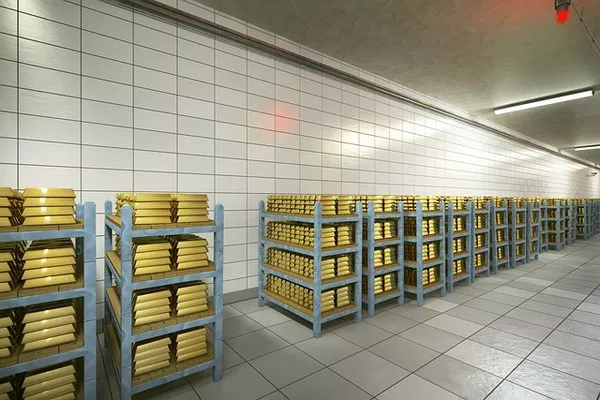In a rally that continued into Friday, gold prices extended gains following a slight downgrade to third-quarter U.S. GDP and soft labor market data, pushing the dollar to four-month lows. The focus now turns to crucial inflation data, with investors seeking further confirmation that the Federal Reserve will implement interest rate cuts in 2024.
Spot gold inched closer to breaking out of its $2,000-$2,050 an ounce trading range established over the past week, marking a positive turn for gold enthusiasts amid signs of a cooling U.S. economy. As of 00:16 ET (05:16 GMT), spot gold rose by 0.2% to $2,049.20 an ounce, while gold futures expiring in February increased by 0.5% to $2,060.65 an ounce. Both instruments reached over two-week highs and were poised for over a 1% gain for the week.
The dollar’s decline on Thursday, hitting more than four-month lows, contributed to gold’s gains. A revised reading on third-quarter GDP, while still indicating stronger growth than its developed world counterparts, showed a slight decrease from initial expectations. Additionally, a less-than-anticipated rise in weekly jobless claims raised hopes of a cooling labor market.
The correlation between cooling economic growth, softer inflation, and decreased labor activity has become a focal point for the Federal Reserve’s interest rate decisions. The Personal Consumption Expenditures (PCE) price index data, the Fed‘s preferred inflation gauge, is eagerly anticipated later in the day. Despite expectations that it will remain above the 2% annual target, the trend could influence the central bank’s decision on interest rates well into 2024.
The anticipation of rate cuts, potentially as early as March 2024, has been a driving force behind gold’s robust performance over the past week. Despite some warnings from Fed officials cautioning against overly optimistic expectations of early monetary easing, gold is currently trading less than $100 away from the record high set in December.
In the realm of industrial metals, copper prices remained relatively stable on Friday, hovering near their highest levels since early August. Copper futures expiring in March showed little change at $3.9253 a pound, set for a 0.9% weekly gain – their second consecutive week in positive territory. The boost in copper prices is attributed to expectations of lower interest rates in 2024, likely to stimulate global economic activity and bolster copper demand. The increasing emphasis on green energy and electric vehicles is also anticipated to drive demand, while closures of mines in Peru and Panama are expected to tighten copper supplies.


